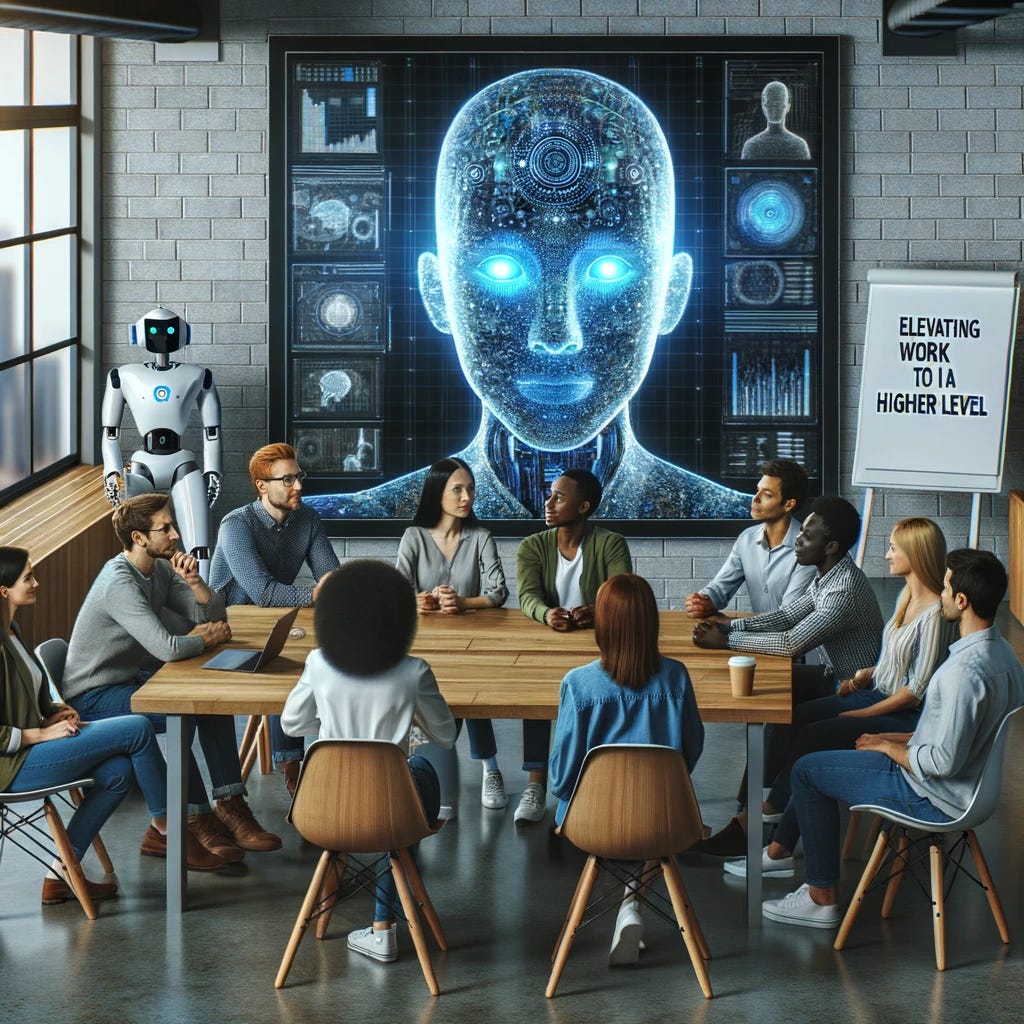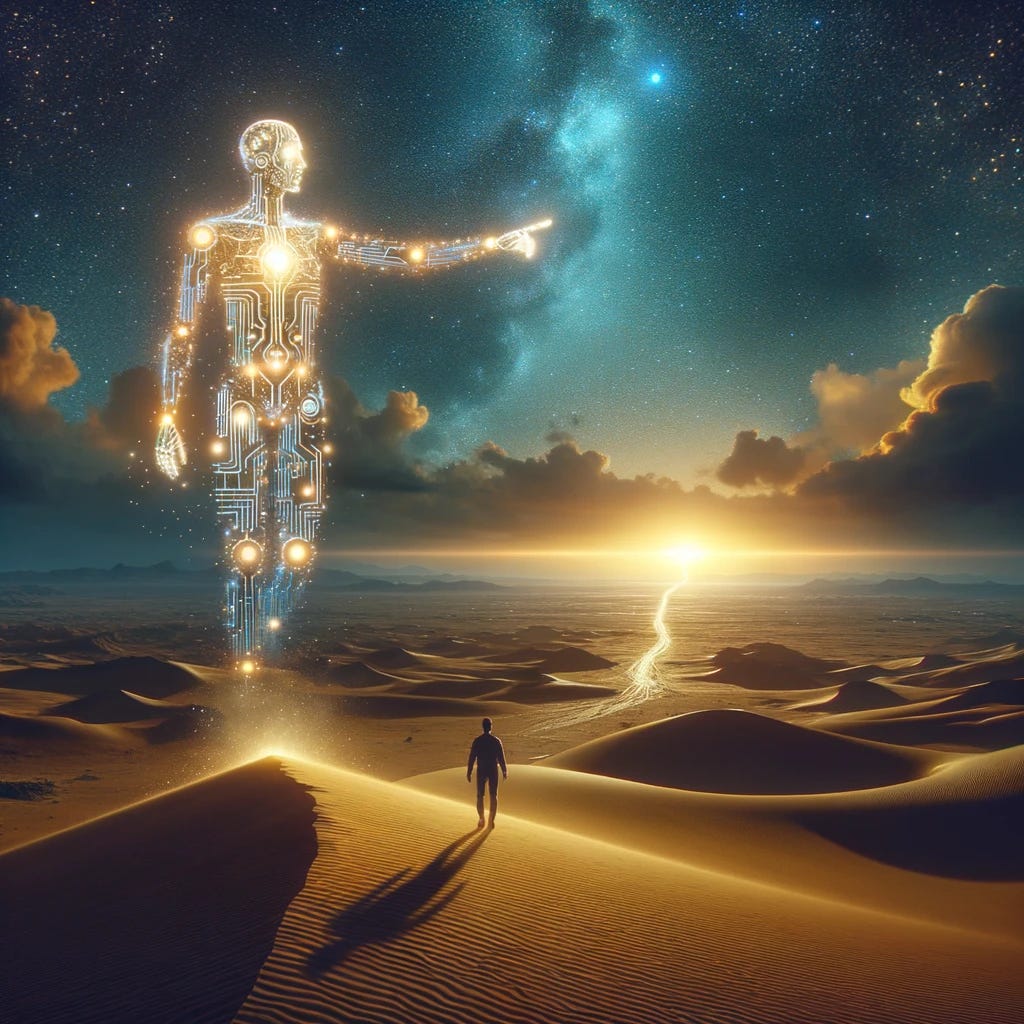AI & Imagination: From Servant to Creative Partner of the Future
“Imagination is more important than knowledge,” a famous saying by Albert Einstein, takes on new significance in the era of generative AI.
This technology has revolutionized our access to knowledge in unprecedented ways, fundamentally altering how we apply it in both our personal lives and professional endeavors. Yet, despite the vast possibilities that AI offers — many of which are difficult for most of us to fully comprehend — it’s our imagination that remains the most valuable asset we bring to the table.

My favourite books growing up were the Narnia series which starts with the lion Aslan singing new worlds into existence. I feel like the above chest of drawers has just materialized in my room and each drawer holds a world of adventure and excitement. Which one should I choose? What hides in that one? If I close it and open it again tomorrow, will a new possible world present itself? Trying to keep up with AI news these days is a bit like having access to this fantasy chest of drawers.
Suddenly our creative wishes are just a few keystrokes away from becoming reality. When everyone is presented with doors to possibilities we hadn´t even realized existed, and our imagination is the key that unlocks them, the ability to work with AI as a creative partner will be the defining skill of the future of both work and play.
One of the best ways to spur imagination is by looking for an analogy and placing your subject in a different frame of reference to see what similarities and differences come up. These often point to interesting areas of exploration.
Imagination is a function of our minds. Being a long-time practitioner of meditation and consciousness development, I thought it would be interesting to see what insights the concept of satsang could bring when transferred to the future of work with AI.
Satsang, a term from Sanskrit, traditionally refers to a gathering of individuals in the presence of a guru or teacher to discuss and reflect upon spiritual truths. It’s a space of collective learning, contemplation, and pursuit of higher understanding.
Introducing AI into the workplace isn’t merely about efficiency or profit — it’s about elevating work to a higher level of understanding and collaboration, to further humanity´s growth and solving some of our most intractable problems. In my vision, work could become more like satsang — an uplifting community of truth-seeking, reflection, discussion and teaching. So let´s open the chest of drawers and peek into the future of work with AI.

First Drawer: Collective Learning
In traditional satsang, people gather to learn from a guru or enlightened individual. Well, this analogy is obvious: AI serves as a “knowledge guru,” continuously learning and providing insights from vast amounts of data, enhancing collective knowledge, tailoring advice and suggestions to the individual´s needs and level of understanding.
Your AI guru has read more books and research papers than you could possibly hope to cover in a lifetime, and explanations or summaries of any concept or subject is readily available, whether you want to contrast and compare different areas of thought in creative ways to spur new insight or choose to dig infinitely deeper — it´s all up to you, the learner.
Second Drawer: Pursuit of Truth and Clarity
In satsang — the aim is to seek truth and clarity about life and existence.
AI assists in data analysis, ensuring decisions are made based on facts and clear insights, minimizing biases. Currently, knowing the limitations of your AI guru when asking factual questions is crucial, using a language model is not like using a lexicon. Fake news is sadly poised to proliferate even faster with AI, but on the other hand, fact-checking and verification should become better with enhanced AI support, enabling us to separate the wheat from the chaff. Seeing issues from diverse perspectives, analysing the pros and cons of different actions, scenario exploration and making sense of complexity are all areas where AI can help our limited minds greatly.
Third Drawer: Deeper Reflection
In traditional satsang — time is spent on introspection and meditation.
With AI in the workplace, it can be put to work handling information processing and repetitive tasks, giving humans more time to reflect on strategies, implications, and innovative approaches.
When your To-Do list is able to execute itself, your job is to identify the tasks that are worth doing.
Our time is precious and human attention limited. There are endless sources of distraction. The future belongs to those who are able to focus their human effort on groundbreaking innovations and inspiring action that drives positive societal change. Thought-leaders define the direction of both politics and science. Time to think is what is currently lacking.
Fourth Drawer: Guided Mentorship
A guru traditionally guides the group towards enlightenment. Given the right prompts, an AI could probably accomplish this as well, but on a more work-related note AI can serve as a mentor, guiding you with personalized feedback, training, and skill enhancement suggestions. AI can offer immediate feedback and suggestions as you perform your work, co-piloting everything from coding to strategic analysis. By analyzing communication patterns, AI could offer feedback on soft skills like teamwork and leadership, as well as create simulated scenarios where employees can practice skills in a risk-free environment. Your AI assistant can act as an expert in any field you care to discuss.

Fifth Drawer: Community and Collaboration
In a satsang individuals come together as a community, sharing insights and experiences. AI fosters collaboration by connecting teams, providing shared insights, and enhancing communication. Examples abound: from automated matching of skills to project needs, to creating dynamic, context-aware virtual spaces where team members can collaborate in real-time, complete with AI-generated agendas, workshop facilitation, summaries, and follow-up actions. And we can all keep speaking whatever language we choose and instantly be translated and understood in both spoken and written communication.
Sixth Drawer: Evolving Understanding
Each session in a satsang is designed to deepens one’s understanding and growth. With continuous learning algorithms, AI ensures that the workplace’s knowledge base keeps evolving, adapting to new data and scenarios. On a grander scale AI has already been instrumental in advancing our understanding across a wide range of disciplines, from the intricacies of biological systems like protein folding structures to the vast complexities of the universe, climate modeling, material discovery and behavioural economics. AIs vast computational and processing power is only expected to increase, setting the stage for breakthrough discoveries across several fields of research going forward.
Seventh Drawer: Holistic Well-being
Just as satsang is not only about intellectual discussions but overall spiritual and emotional well-being, so could AI tools monitor and ensure the well-being of employees, from ergonomic suggestions to mental health breaks. By gauging the mood in a meeting, AI could suggest tailored conflict resolution strategies, interactive activities or breaks to re-energize participants and improve overall engagement. It can also analyze work habits to suggest better tools or more efficient ways of completing tasks, potentially reducing overtime and improving work-life balance.
Wearable monitors like smart watches already provide personalized sleep, exercise, mindfulness and stress-reduction techniques. By measuring everything from blood-sugar, hydration, oxygen-saturation, and mental health parameters like stress and mood your AI assistant is equipped to help you stay as happy and healthy as possible, performing at your best — given that you choose to follow the guidance, of course.

The promise
The keys to unlocking unprecedented realms of possibility are in our hands. Just as satsang serves as a sanctuary for spiritual and intellectual growth, the future workplace, enriched by AI, has the potential to become a place of holistic well-being, creativity, and collaborative innovation. Yet, the true promise lies in the synergy between human imagination and AI’s capabilities.
In all our excitement it bears remembering that what the world really needs isn´t artificial intelligence. It is more human love.
So we need to keep working on our own inner development and our capacity for care and compassion along with fostering genuine human connections. After all, the future is not just something to predict; it’s something to invent — together.
AI & Imagination: From Servant to Creative Partner of the Future was originally published in Compendium on Medium, where people are continuing the conversation by highlighting and responding to this story.